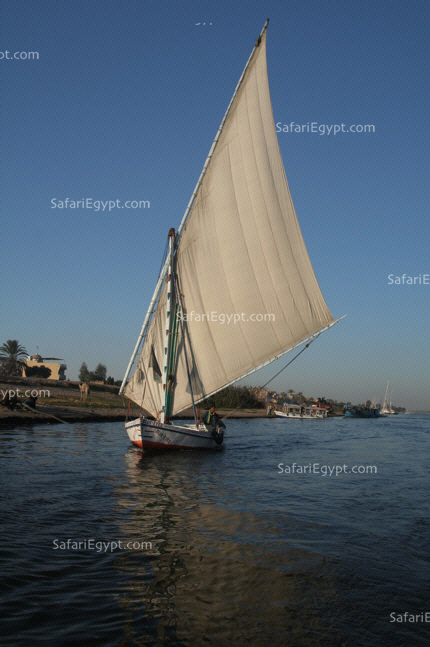LUXOR:
Living History
Drifting on Egypt’s “lifeblood”, the river Nile on a pleasant felucca
ride with its distinctive white sail in sunny Luxor is an exclusive
ticket to travel through time to trace a great, ancient civilization,
which had once flourished on opposing banks of the river, yet continues
to startle locals, and visitors alike. The matchless wealth of temples,
and tombs bejeweling the majestic city, and the beautiful all year
long sunny weather, simply explains why Luxor is described as the
“World’s greatest open-air museum”. Magnetically drawing tourists
since Greek, and Roman times, today the city is a bustling town
of some 150,000 inhabitants, as well as tourists strolling down
its narrow streets, gazing in awe at the countless ancient treasures,
as well as the colorful bazaars, quality cafes, and modern hotels,
equipped to accommodate guests from all over the world to create
of their stay a pleasant, memorable one.
 Getting
there and about Getting
there and about
With a growing air traffic destined to the city of Luxor, its International
airport has been upgraded to accommodate up to eight million passengers
per year. There are two terminals serving both international and
domestic flights, as for visitors flying directly from Cairo, a
45-minute, domestic flight connects with Luxor. However, to enjoy
a historic journey, catch the night train from Cairo’s main train
station, and enjoy utter hospitability, and a comfortable night
sleep in the train’s fully equipped sleeping compartments. Once
you get to Luxor, it is recommended to walk around the town to soak
up its historical atmosphere, as the main tourist attractions are
concentrated in the heart of the town between the Corniche and Al
Karnak street. However, taxis operate throughout the city, ready
to drop you wherever you want. Relaxing two to three, night felucca
trips are also available, and may be appealing to the more adventurous,
as for travelers who like to tour at a slow pace, check out a traditional
carriage ride, a bit slow, but fun, ensuring you get to see it all.
Luxor's
Historical Overview at a glance
What we now know as “Luxor” grew out of the ruins of Thebes, once
the capital of ancient Egypt’s New Kingdom, and seat of power for
almost 1350 years, precisely from 2100 BC to 750 BC. Architectural
works remarkably flourished during this period, under various Theban
Kings, and the Theban Necropolis, on the West bank of the Nile is
a living proof, as it is perhaps the world’s richest archaeological
site. Impressed by the immortal monuments, and huge palaces, Arabs
gave the city its current name “Luxor”, meaning “the city of palaces”.
continue reading about Luxor (1 -
2 - 3)
next>>
|
|

 Getting
there and about
Getting
there and about